My last entry was about the Hendryx brass bird cages and the feeders associated with them. Today I would like to discuss the japanned and enameled cages by The Andrew B. Hendryx Co. and the feeders associated with them. First, I believe, we need some definitions.
Japanning, according to Wikipedia, "describes the European imitation of Asian lacquerwork, originally used on furniture. The word originated in the 17th century...The European technique uses varnishes that have a resin base, similar to shellac, applied in heat-dried layers which are then polished, to give a smooth glossy finish."
Enamel paint, according to Wikipedia, " is paint that air dries to a hard, usually glossy, finish, used for coating surfaces that are outdoors or otherwise subject to hard wear or variations in temperature..."
The first reference I've found for japanned cages is on Oct. 31, 1871 on one of the early Andrew B. Hendryx patents. If you note the date, it is before the company of Hendryx and Bartholomew was formed (1875) in Ansonia, Conn. and years before The Andrew B. Hendryx Co. was formed and moved to Audubon St. in New Haven, Conn. (1879)
Japanned and enameled cages have a different look than the brass cages. I, honestly, can't tell the difference between the two finishes. Even in the catalogs there isn't a specific "type" of look for the enameled and another for the japanned cages. These cages are made of metal. They look strong and sturdy. The 1910 Hendryx trade catalog states: "Our various styles of Japanned Cages are Superior to any Japanned Cages manufactured. The rails or cross bands of these Cages are made of the best charcoal tin plate, double-punched, making a stronger and lighter cage than can be made of any other material."
Let's get some pictures in here so you can see the difference from the brass ones discussed previously.
This revolving wheel cage was painted by the seller before I purchased it. He said there were multiple colors on it and he thought that black was the base color. He did a great job. The base was gone when he got it and he had one manufactured to fit the cage. Wheel cages are not easy to come by. I usually don't purchase modified cages but with this one I made an exception.
All the cages prior to this blue and white cage have had the Hendryx label on the doors. According to my trade catalogs, the Hendryx label appeared on cages starting around 1904. Prior to that, instead of the label, the cages had the Hendryx "look". Scrolling back through these cages, you'll notice that:
1-the rails or cross bars are double-punched and lying on their sides. O. Lindemann & Co., Osborn, and John Maxwell (and Sons) have the rails flat and are single punched.
2-roof has the same punched metal design
3-clam shell design is often seen on the earlier cages
4-door has the same design seen below that is in the 1891, 1895, and 1904 catalogs: 5-7 hash marks in a sunburst that are placed on a scalloped plate.
The 1891-1910 catalogs also have the bird and flower finials, the punched railing design, and the cluster that is on each point of the base.
I believe this to be an early Hendryx show cage that is over 100 years old.
These are two pictures of the bottom of the base with its decals of flowers and angels. Truly a unique cage.
Notice the marvelous variety in colors that each cage offers. Note the variety of shapes. These japanned and enameled cages are unique. They are getting more and more collectible as time goes on.
I hear you wondering, "if these cages are so unique, what kind of feeders would go on them?" Good question!! I have several pictures that will help, I believe.
This is what the early feeder openings looked like in the 1891 and 1895 catalogs. There is a bar (rail) at the top which will hold the wires to one feeder, and there is a bar at the base of the feeding hole which will hold the clip of the other one. They are interchangeable on cages.
The tin top feed (1860) cup has a flint glass bottom which is encircled with a metal band and a clip. See how the feeder on the left clips onto the lower bar? The feeders below (unfortunately) have been painted but they remain intact and work on the cage with feeder openings like this.

These flint glass feeders (1880) are the other variety. There was a metal band that was under the 3 nubs on the glass and then it came up to about even with the top of the feeder and hooked over. The hooks held onto the top rail.

Another feeder that made its debut in the 1895 catalog is the flint (clear) glass (triangle-base) feeder. The catalog number for it is the 1886 cup. Note the nub on the top side of the cup which slides down between the vertical bars and rests on the top rail of the cage. Note that there is no bottom bar on this catalog example of feeder opening.
The crimp in these wires is too high to support the oval feeders we are used to now. This is for the 1886 triangle-base cup.
Look closely and see how the feeder opening is at the same height of the cage feeder opening. This is the correct feeder for the cage.
There are notes in the 1891 & 1895 catalogs under the 1886 cup which state: "This Cup will fit any Japanned Canary Cage manufactured by us to this date, and will be sent with all these cages unless customers request either 1880 or 1860 Cups be sent with Japanned Cages ordered."
By the 1904 catalog, the 1886 cup (triangle base) is the only feeder offered on its japanned cages. The two others were pictured and offered at customer request only. By 1910, the 1880 and the 1860 cups were no longer offered.
By the time the 1910 catalog was printed, the oval feeder cup was introduced. It was referenced as the 1907 Cup and appeared only on the white enameled, gold-trimmed canary cages. This cup was made of flint glass (clear) and was only used on japanned or enameled cages. The opal glass or milk glass oval feeders were used on the brass cages.
This is the cage feeder opening for the oval feeder cup. Note the crimped wires are lower on the cage, closer to the base of the cage. There is no bar underneath the feeder opening.
Note the nub at the base of the feeder opening. This is placed inside the feeder opening on the cage and slides down to secure on the crimped wires at the bottom.
The feeder opening and the cage opening align. This is the correct feeder for this cage.
There is one reference to the "crystal glass seed cup" in the 1930 catalog. It was referenced on an enameled cage-white with green trim. I took several pictures, one with the flash, so you can see how opaque it is compared to the flint (clear) glass one above. These are the only two like this that I have seen.
The "Biltmore", patented in 1924, came in brass, bronze, gun metal, and in Duco DuPont finishes. This cage has a brass, riveted center cage and a metal cone and base. I don't honestly know which oval feeders go into it. I started with the opal glass but they didn't look right. Currently I have the flint glass
There are several enameled and japanned cages in the 1910 catalog that use open flint glass cups in rotary feeders.
This is a double breeding cage that had a divider down the center of it. There are places on the back wall for nest frames. Note the rotary feeders on each side of the cage.
This is a Mockingbird cage from the 1910 catalog that utilizes the rotary feeders.
The rotary feeders soon gave way to the flint glass open cups.
The enameled travel cages needed small cups that didn't take up a lot of space. The open cups fit the need well. The round cage below is missing the insert that held the cups.
This is a complete travel cage including the opal open cups and holder.
I hope you have enjoyed this walk in history with The Andrew B. Hendryx Co. japanned and enameled cages and feeders. Each new cage I see or purchase I am curious about the associated feeder. I want the cage and feeder to match in the age it was developed, not the age I "guess" it to be. My next entry will concern cage dating by the feeder openings. I have a great example.
Thank you for joining me on this journey. I learn each time I put together an entry and look forward to your comments. Please write and let me know if I've written something in error. I want to learn all I can. If you have pictures of other feeders and/or cages, please send them, with your comments, to tweetthings53@gmail.com and I will post them as a guest entry.
'Tis time to get into the attics and see what Grannie has been storing up there for so long. Hopefully it's a long-lost Hendryx that you will share.
Happy Hunting.
Barbara

















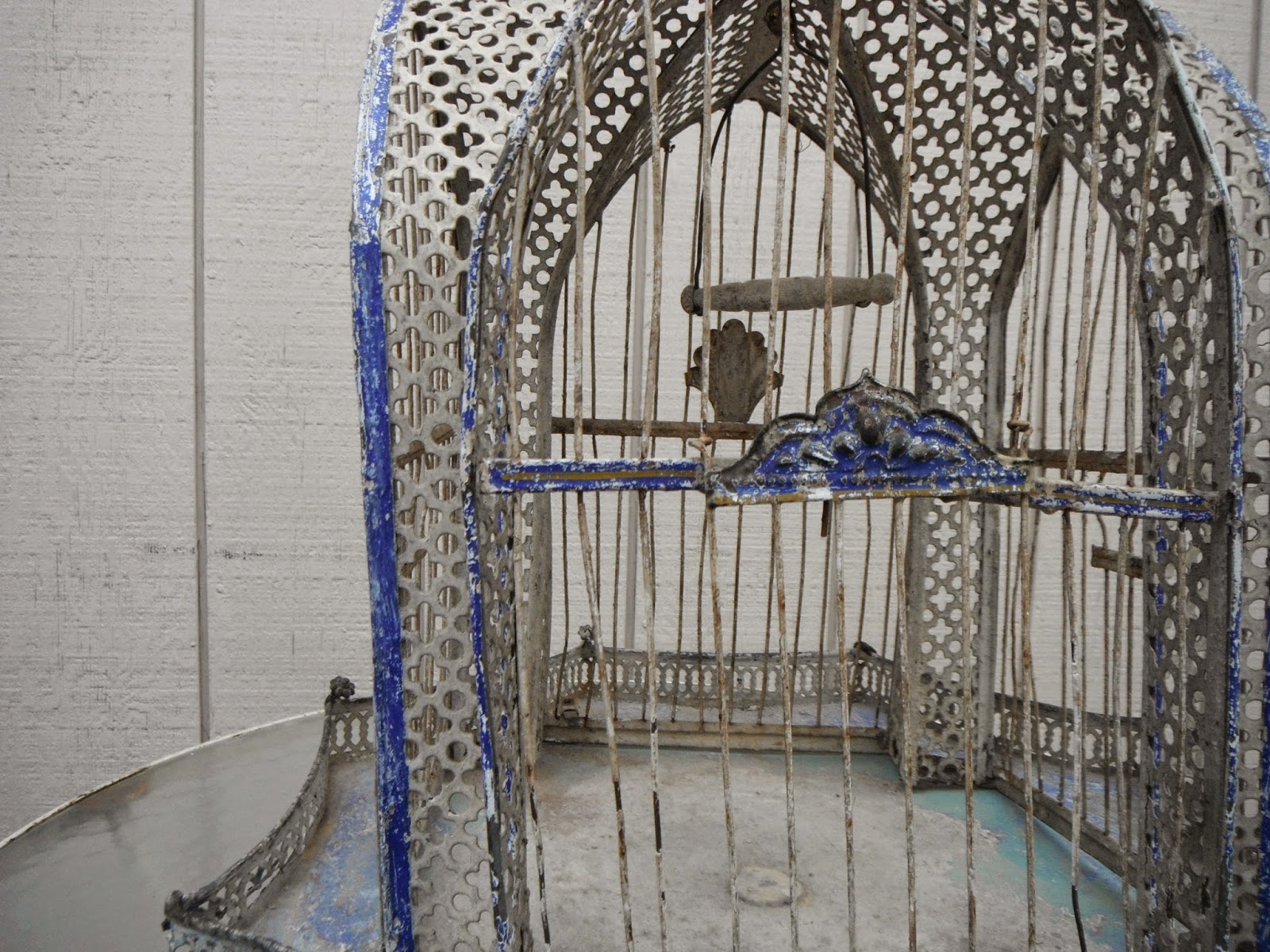









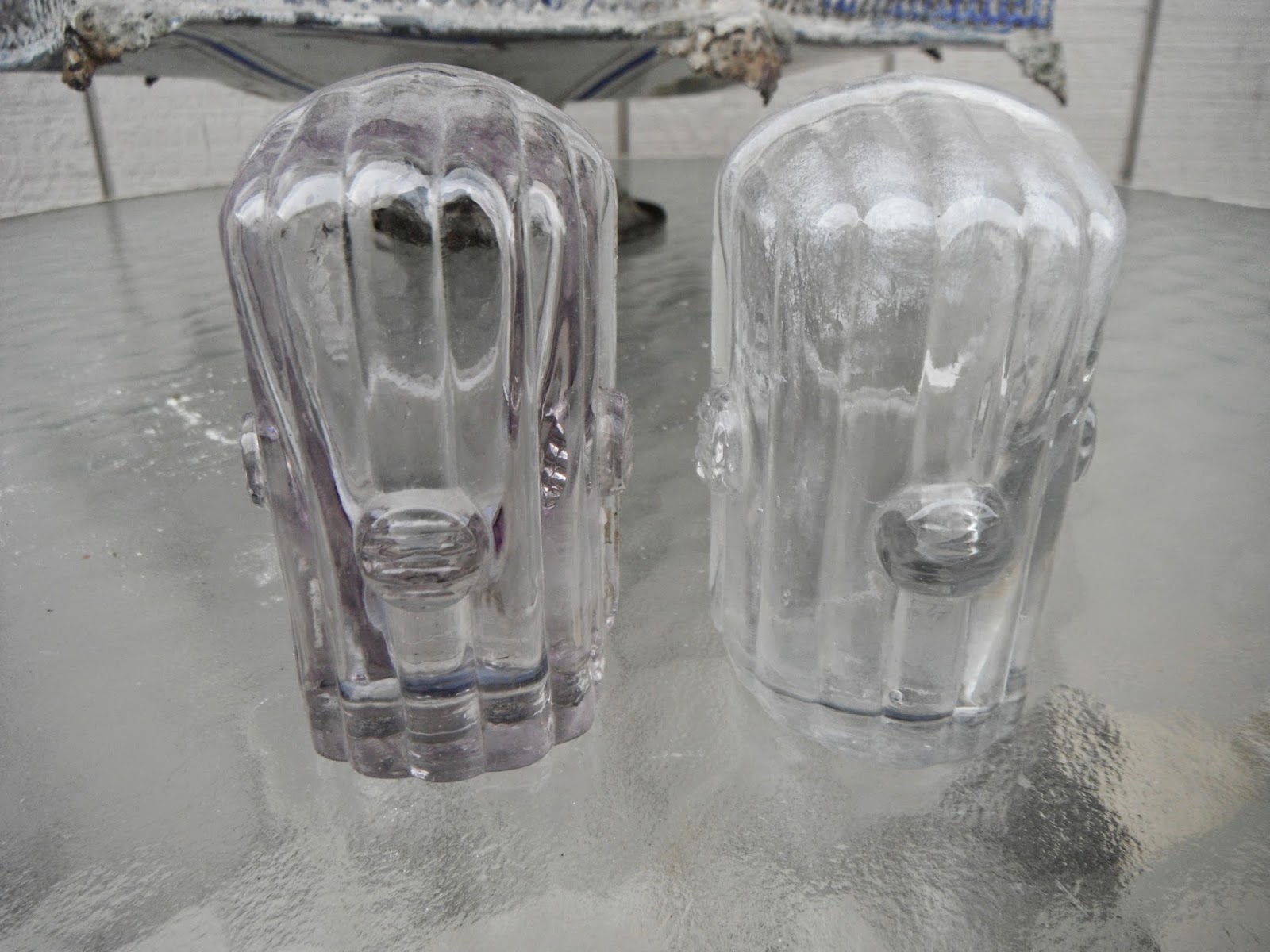









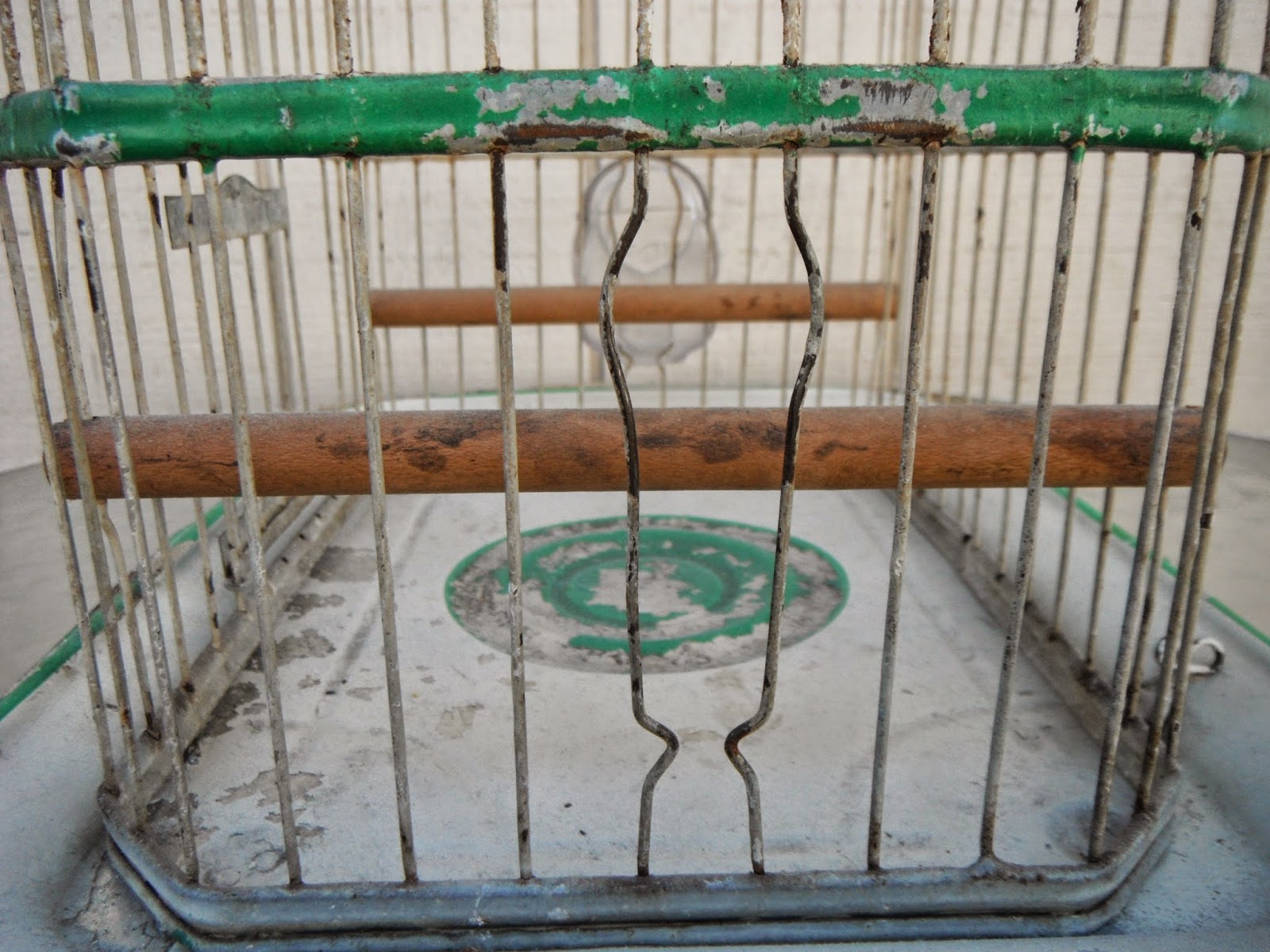























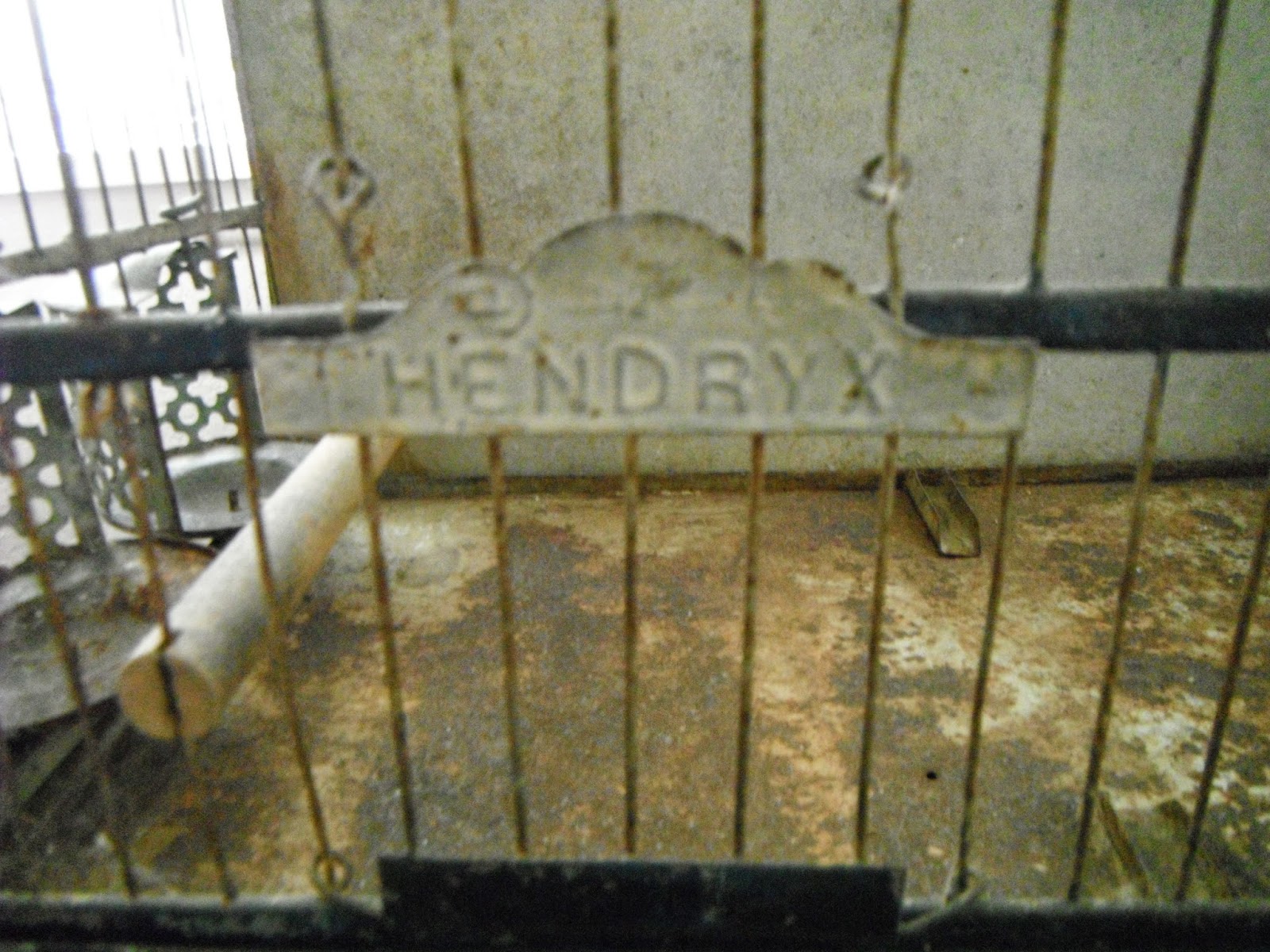





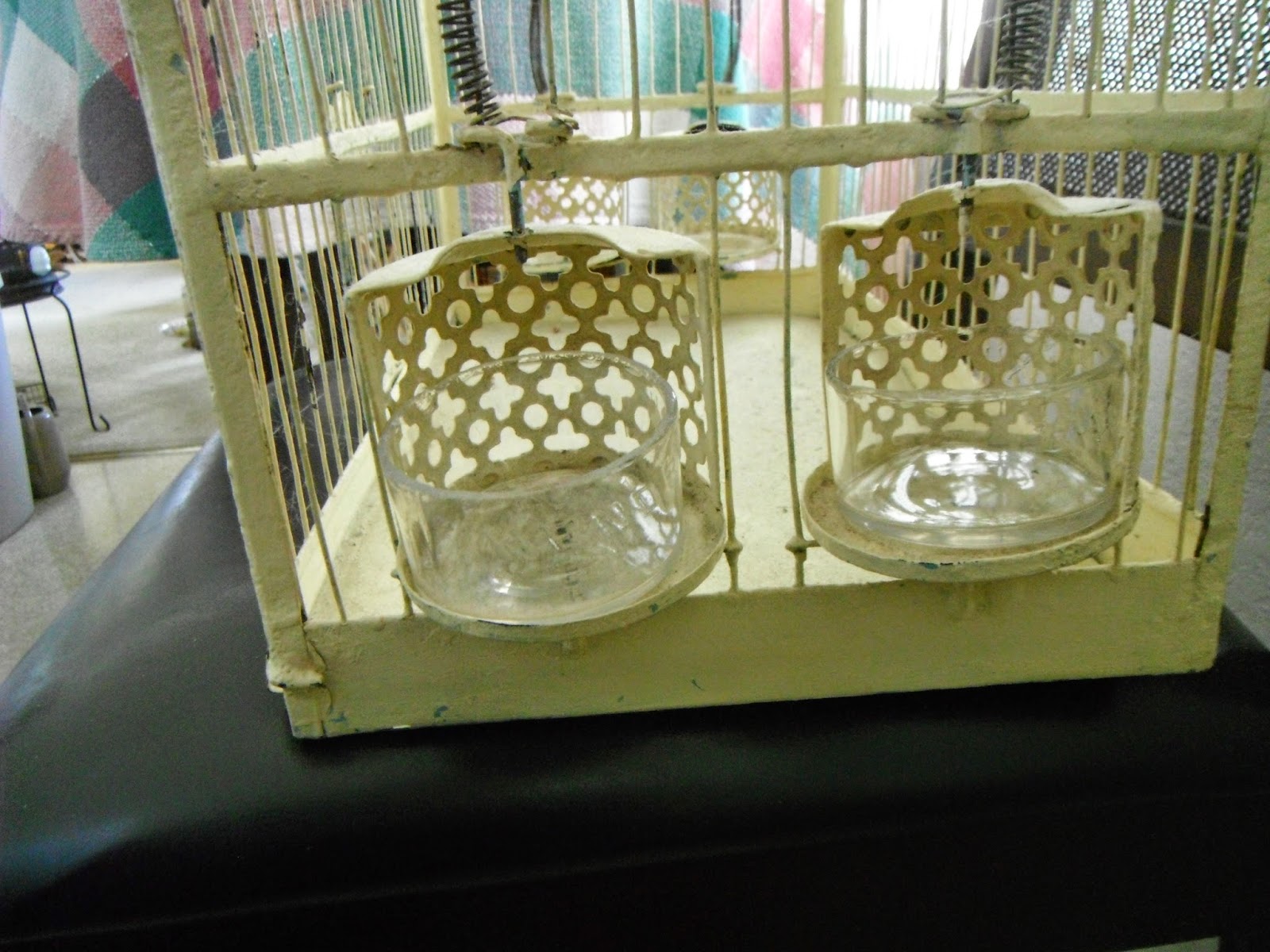











1 comment:
Great article, your blog really is informative and your cages are beautiful.
You should consider writing a book on cages and accessories. I'd buy it!
Post a Comment